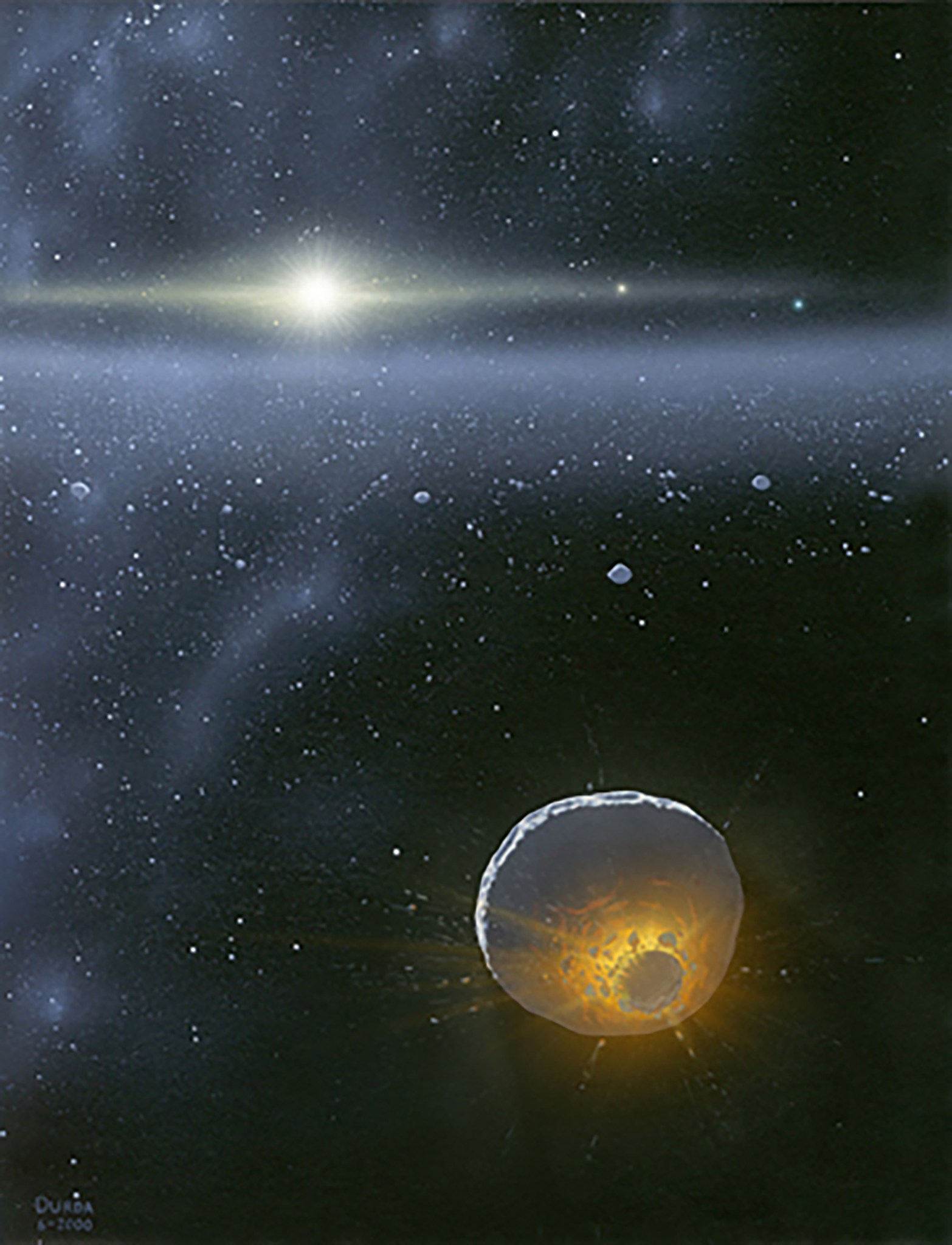NASA’s New Horizons Detects Dusty Hints of Extended Kuiper Belt
Hey, Space Placers!

Artist’s concept of a collision between two objects in the distant Kuiper Belt. Such collisions are a major source of dust in the belt, along with particles kicked up from Kuiper Belt objects being peppered by microscopic dust impactors from outside of the solar system.
Credit: Dan Durda, FIAAA
The New Horizons spacecraft that flew by Pluto in 2015 is still making observations of the outer solar system.
In a 2/20/24 NASA news release:
"New observations from NASA’s New Horizons spacecraft hint that the Kuiper Belt – the vast, distant outer zone of our solar system populated by hundreds of thousands of icy, rocky planetary building blocks – might stretch much farther out than we thought.
Speeding through the outer edges of the Kuiper Belt, almost 60 times farther from the Sun than Earth, the New Horizons Venetia Burney Student Dust Counter (SDC) instrument is detecting higher than expected levels of dust – the tiny frozen remnants of collisions between larger Kuiper Belt objects (KBOs) and particles kicked up from KBOs being peppered by microscopic dust impactors from outside of the solar system.
The readings defy scientific models that the KBO population and density of dust should start to decline a billion miles inside that distance and contribute to a growing body of evidence that suggests the outer edge of the main Kuiper Belt could extend billions of miles farther than current estimates – or that there could even be a second belt beyond the one we already know."
New Horizons is 5 billion miles from Earth and has a predicted life until the 2040's.
I think the plucky Pluto spacecraft has lots more to discover "way out there".
Sky Guy in VA

Comments
Post a Comment